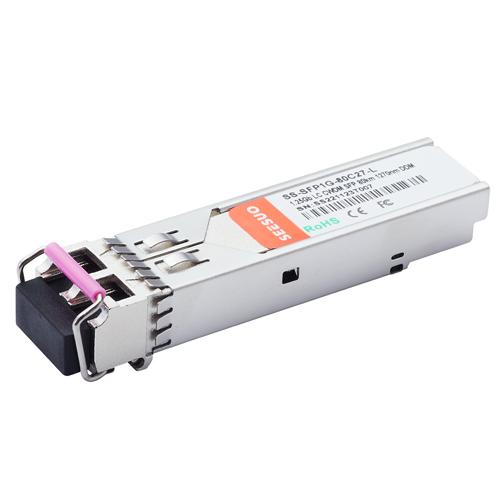- Related articles
- How to Test a Fiber Optic Transceiver?
- All Cisco CWDM-SFP10G-1610's information (List price, Specs, Datasheet PDF, Compatibility
- All Cisco WS-G5484's information (List price, Specs, Datasheet PDF, Compatibility matrix)
- Types of network card speed
- Apply to 100BASE-BX-D Standard Optical Transceiver Models
- Optical Transceivers for Cisco WS-C2960X-24TD-L Switch
- Optical Transceivers for Cisco WS-C3650-48TQ-L Switch
- All Cisco ONS-SI-100-LX10's information (List price, Specs, Datasheet PDF, Compatibility m
- All Cisco MA-SFP-10GB-LR's information (List price, Specs, Datasheet PDF, Compatibility ma
- The Differences between PCI Express 1.0, 2.0 And 3.0

Definition:
The small form-factor pluggable (SFP) is a compact, hot-pluggable transceiver used for both telecommunication and data communications applications. The form factor and electrical interface are specified by a multi-source agreement (MSA) under the auspices of the SFF Committee. It interfaces a network device motherboard (for a switch, router, media converter or similar device) to a fiber optic or copper networking cable. It is a popular industry format jointly developed and supported by many network component vendors. SFP transceivers are designed to support SONET, gigabit Ethernet, Fiber Channel, and other communications standards. Due to its smaller size, SFP obsolesces the formerly ubiquitous gigabit interface converter (GBIC); the SFP is sometimes referred to as a Mini-GBIC. In fact, no device with this name has ever been defined in the MSAs.
What is a SFP GBIC module?
SFP transceivers are expected to perform at data speeds of up to five gigabits per second (5 Gbps), and possibly higher. Because SFP modules can be easily interchanged, electro-optical or fiber optic networks can be upgraded and maintained more conveniently than has been the case with traditional soldered-in modules. Rather than replacing an entire circuit board containing several soldered-in modules, a single module can be removed and replaced for repair or upgrading. This can result in a substantial cost savings, both in maintenance and in upgrading efforts.
A gigabit interface converter (GBIC) is a transceiver that converts electric currents (digital highs and lows) to optical signals, and optical signals to digital electric currents. The GBIC is typically employed in fiber optic and Ethernet systems as an interface for high-speed networking. The data transfer rate is one gigabit per second (1 Gbps) or more.
GBIC modules allow technicians to easily configure and upgrade electro-optical communications networks. The typical GBIC transceiver is a plug-in module that is hot-swapable (it can be removed and replaced without turning off the system). The devices are economical, because they eliminate the necessity for replacing entire boards at the system level. Upgrading can be done with any number of units at a time, from an individual module to all the modules in a system.
Conclusion:
A small transceiver that plugs into the SFP port of a network switch and connects to Fibre Channel and Gigabit Ethernet (GbE) optical fiber cables at the other end. Superseding the GBIC transceiver, SFP modules are also called "mini-GBIC" due to their smaller size. By choosing the appropriate SFP module, the same electrical port on the switch can connect to fibers of different types (multi-mode or single-mode) and different wavelengths. If the fiber is upgraded, the SFP module is replaced. The SFP converts the serial electrical signals to serial optical signals and vice versa. SFP modules are hot swappable and contain ID and system information for the switch.
Please click to check more related concepts:
| Transceivers Package | Ethernet standard | Application | Transceivers Wavelength | Fiber mode | Interface |
| SFP | 100Base-FX | Bidi | |||
| SFP+ | 1000Base-X | DWDM | Multi-mode | ||
| XFP | 1000BASE-T | WDM | |||
| QSFP+ | 10GBASE-SR | ||||
| X2 | 10GBASE-T | ||||
| GBIC | |||||
| CFP | |||||
| CSFP |






















































